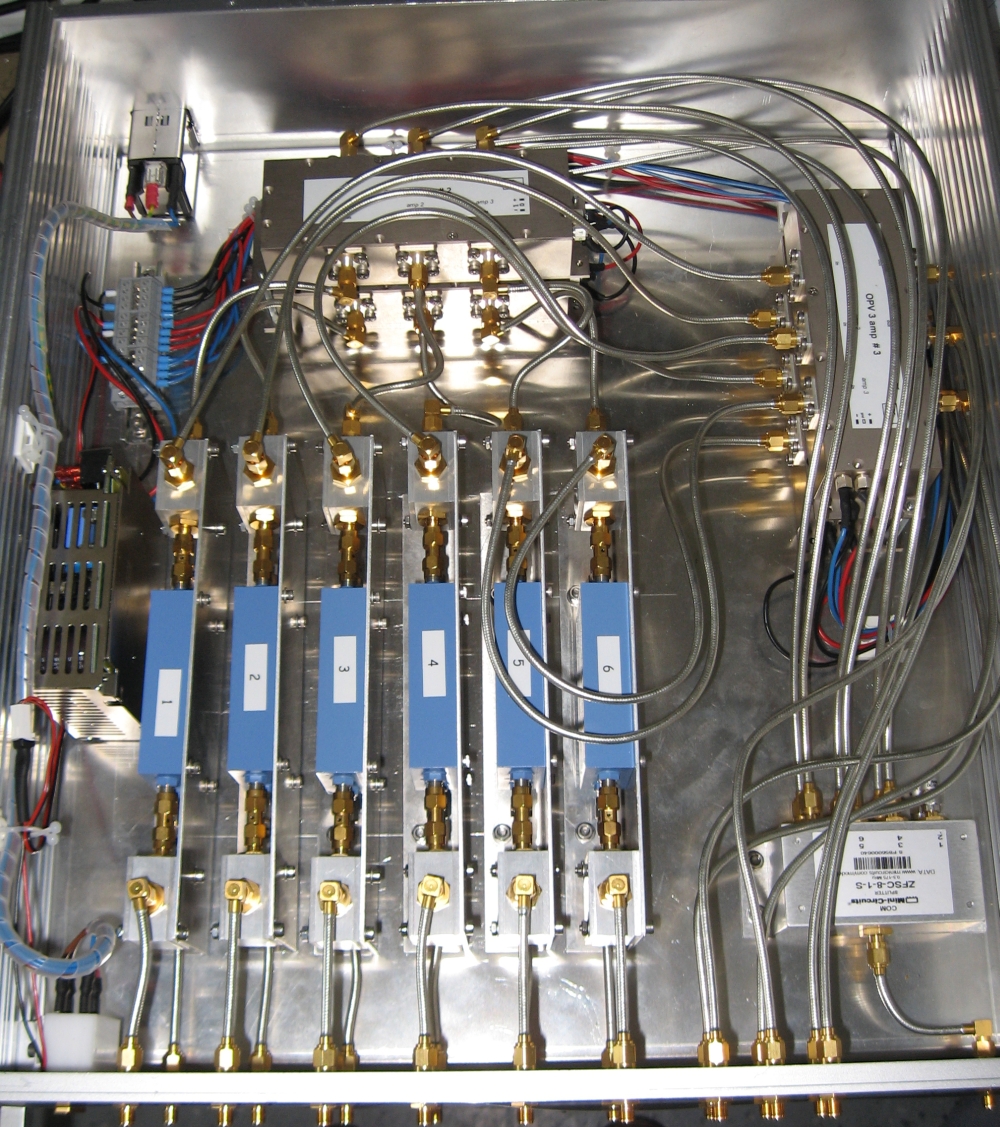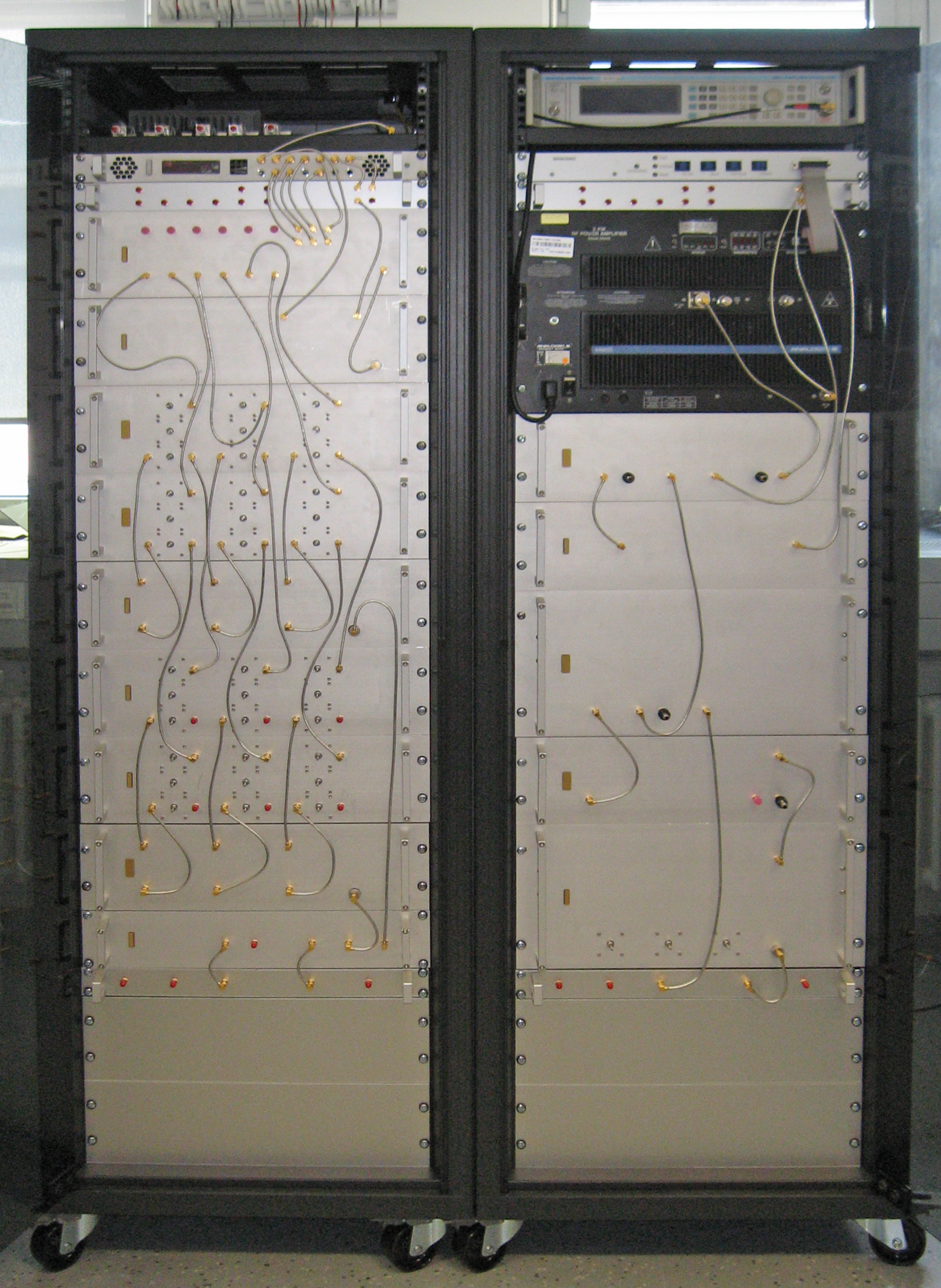High performance linearization system provides coupling without losses
The power bank coupler by Fraunhofer IIS makes the parallel amplification of signals and multi-carrier linearization along with loss-free coupling possible. The signal coupling process is used when multiple signals are to be transmitted over one antenna. This is advantageous in various applications such as on ships where there is only one transmitting antenna for sending multiple, frequency-agile shortwave signals. Applications in the area of public safety benefit in particular from this efficient, reliable coupling process.



